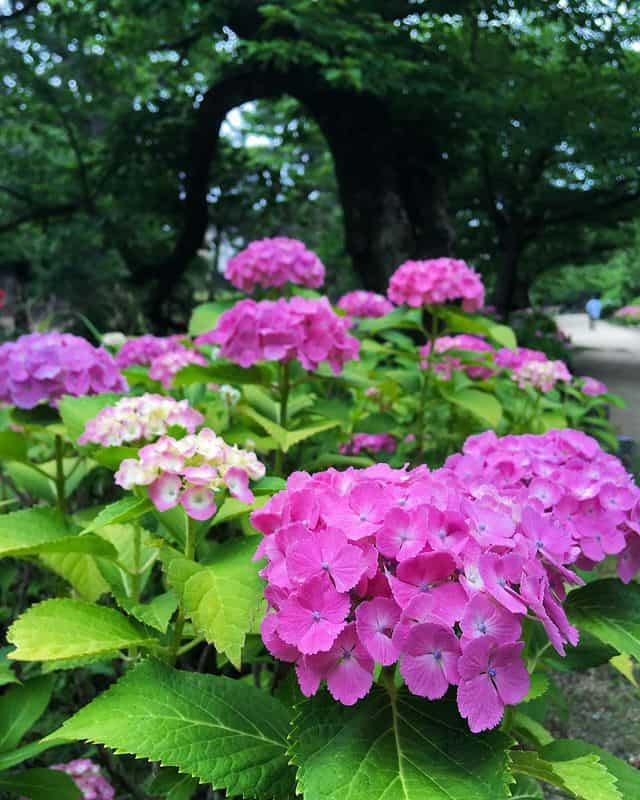Even after bloom booster and proper care, if your Hydrangeas is bare of flowers, you must consider cutting back.
The lack of cutting back can cause Hydrangeas to mimic a mass of woody stems with flowers growing smaller.
So, learn about the best time and way to cut back Hydrangeas to make them healthy and encourage more blooms.
Table of Contents Show
Do you Need to Cut Back Hydrangeas Every Year?
While most Hydrangeas are deciduous, a few are evergreen and stay green the whole year.
Deciduous Hydrangeas shed their leaves before winter arrives and stay dormant with leafless stems.
Thus, choose to prune Hydrangeas leaving fewer inches rather than cutting back if you want a spacious look.
Although Hydrangeas remain dormant, their leafless stems tend to grow. Therefore, you can prepare Hydrangea for optimal growth in winter.

To do so, prune off damaged parts in the fall and deadhead fading flowers before dormancy.
After that, let Hydrangeas rest the whole winter. You should not cut back in their dormant phase.
When to Cut Back Hydrangeas?
Although Hydrangeas benefits from a careful cutback, it is not mandatory.
Before making a decision, you must know the types and growth habits of your Hydrangeas.
Moreover, there are Hydrangeas that can bloom in both old and new wood.
New wood bloomers need regular pruning so that they do not end up with old woods and no new growths to bloom.
However, the old wood bloomer Hydrangea prefers to be woodier for denser flowering.
| Types of Hydrangeas | Specifications | Old Vs. New Wood | Period of Cutting Back |
|---|---|---|---|
| Bigleaf Hydrangea | They have large and round blooming clusters with flat, lace-cap blossoms. | Old | Instantly after blossoms fade away |
| Oakleaf Hydrangea | They own large leaves similar to that of oak with cone-shaped flower heads. | Old | Summer after the blooms fade away |
| Mountain Hydrangea | Though Hydrangeas resemble lacecap varieties, they are more compact in size and produce smaller leaves. | Old | Instantly after blooming |
| Climbing Hydrangea | They climb through suckers and prevent the urge to remove dormant growth on the wall or trellis. | Old | Only when needed to shape (winter or early spring) |
| Smooth (Wild) Hydrangea | They are generally white and produce smaller flowers and leaves than those of Bigleaf varieties. | New | Early spring or late winter before new growth begins |
| Panicle Hydrangea | They produce cone-shaped blooms that remain throughout winter. | New | Only light treatment in early spring or late winter |
If Hydrangea varieties are Hydrangea macrophylla, Hydrangea quercifolia, Hydrangea serrata, and Hydrangea aspera, you can cut back them in spring, as long as there is the first pair of buds.
However, you can perform cutting back harder on some varieties, including Hydrangea paniculata Hydrangea aborescens that produce blooms on new growth.
It is best to prune them after flowering. Though it is not necessary, cutting back helps prevent Hydrangeas from getting too tall.
How to Cut Back Hydrangeas successfully?
As old wood bloomer does not produce flowers in new growth, cut back the oldest, damaged, or weak stems only.
By doing so, Hydrangea will have fewer healthy old stems with more energy to produce larger blossoms.
Remember, the new stems that are growing after cutting back will only flower next year.
If you are late to cut back Hydrangeas, you might snip off the buds that are supposed to bloom the following year.
Thus, cut your Hydrangeas before July to ensure you will have flowers to admire next year.
Unlike old wood type, Hydrangea that bloom in new wood needs aggressive pruning every year.
If you aim for a spacious growth of Hydrangeas, leave out six inches of stem on the plant.
It will be best to prune off the Hydrangeas using sterilized pruners in the late winter or early spring for optimal growth.
Wrapping Up
Even without cutback or pruning, Hydrangeas won’t have a problem blooming. But they might not bloom vigorously like they would with cut back.
Identify the variety and growth type of your Hydrangeas before swinging shears so you can enjoy denser blooms yearly.


